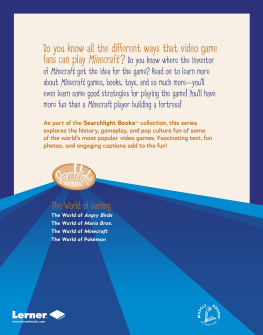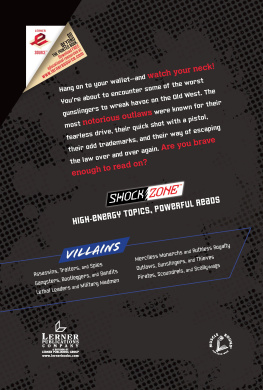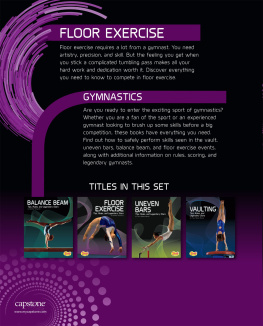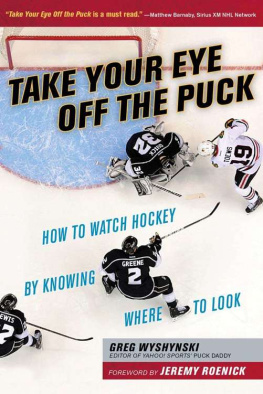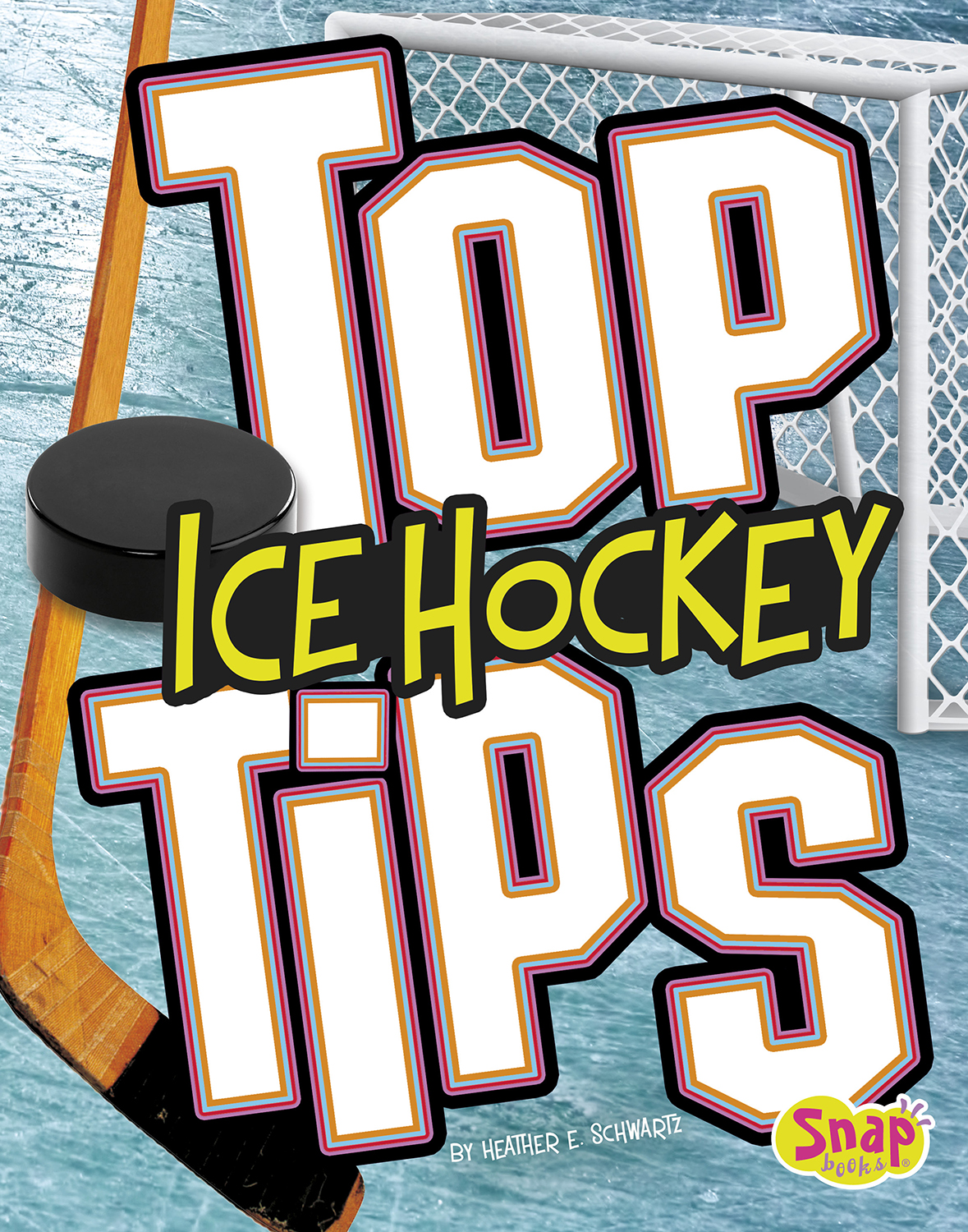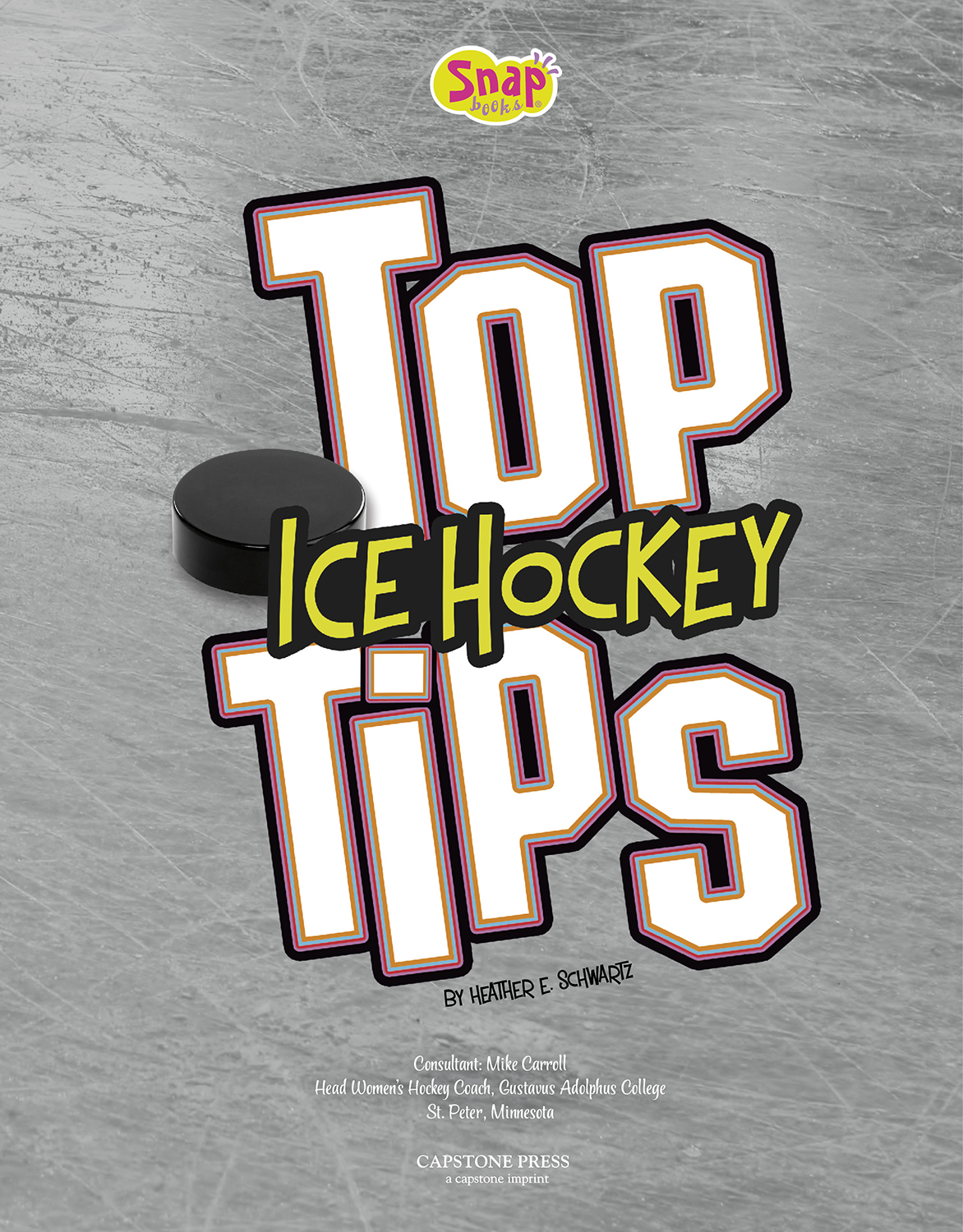Face-Off!
Your heart pounds as you hold your stick poised and ready. Two players, one from each team, stand on the ice ready for the score yourself.
As an ice hockey player, you know the thrill of the game is about much more than winning. Each time youre on the ice, you test the skills youve developed for your sport and your position. Youre challenged to work not only as an individual but also as a team player.
When youre not in a game, you spend time doing drills and going to practice. You know you can help your entire team as a stronger player.
Chapter 1
THE BASICS
Hockey is all about racking up points on the ice. Its a simple concept. But scoring goals on the opposing team is not nearly as simple as it sounds. Players from both teams try to gain control of the puck. They try to move it closer to the opposing teams net. At the same time, they need to keep it away from their own teams net. They shoot to score while opponents play defense and block the shots.
Each shot that makes it into the net earns one point for the team that scored. The team with the most points at the end of the game wins. Scoring isnt easy. At the highest levels in the sport, teams often score fewer than five points.
Hockey History
Much of ice hockeys history took place in Canada. In 1875, James Creighton organized the first ice hockey game in Nova Scotia, Canada. McGill University Hockey Club was the first recognized mens team. It started in 1880. The sports popularity quickly spread throughout Canada. In 1892, the Montreal Amateur Athletic Association won the first Stanley Cup.
Womens ice hockey took a bit longer to get started. In 1889 Canadian Lord Preston flooded the front lawn of the Government House in Ottawa. When it froze, he and his sons and daughters used it to play hockey. This was the first documented account of girls playing ice hockey. By the 1920s, colleges in the United States and Canada had womens hockey teams. In 1990 Canada held the first Women's World Ice Hockey Championships. In 1998, womens ice hockey became an Olympic sport.
Leagues and Levels
Looking to join an ice hockey league? Some American high schools, mainly in Massachusetts and Minnesota, have girls ice hockey teams. If you want to make the team, youll need to attend tryouts first. At tryouts, the coach might have you show your skills in your preferred position, as well as other positions that could help the team.
You could also join a team through USA Hockey, an organization that oversees hockey in the United States. It puts youth players on teams according to age and skill. If players are good enough, they can move up to the next highest age bracket.
At the highest level, women can aim to play professionally for the National Womens Hockey League (NWHL). They can also aim to be a player in the Olympic Games.
Positions
Members of a team dont all play at once. Each team puts five skaters and one goalie on the ice. The coach calls players on and off the ice to make substitutions during the game. There is no pause in play while players enter and exit the game.
Positions that focus mainly on offense include the center, left wing, and right wing. These positions are also called forwards. They pass the puck to each other and try to score. They work on defense and try to block the opposing teams forwards.
Other skating positions include a left defenseman and a right defenseman. They focus on defense and keeping the puck out of their goal.
Goalies have one main focus. They block the puck from reaching the net. All players except the goalie skate up and down the rink. But goalies still need strong skating skills to quickly position themselves around the net to block shots. Any position even the goalie can shoot to score on the opposing team.
Chapter 2
SHARPEN YOUR SKATING SKILLS
The more skate time you can get, the more you can improve in hockey. When the puck travels in different directions during a game, its your job to follow it. That means you need to be able to make quick movements on the ice without falling down. Strong skating skills come in handy for puck handling, passing, and shots on goal. You can build those skills with balance drills.
Practice squats on the ice to improve balance. Glide forward on your skates. Squat as low as you can and keep gliding. Once that feels comfortable, incorporate a technique called "shoot the duck." Glide forward on one skate. Squat as low as you can while pushing the other leg straight out in front. Switch legs and repeat.
Tip Practice using your blade edges for better balance and control on your skates. Use your inside edges to push off the ice and accelerate as you skate. Use the inside edge on one foot and the outside edge on the other for turning and stopping.
Fit to Skate
The right skates are crucial to a hockey players success on the ice. The skates must be fit to the individual player. Hockey skates are fit according to more than just skate size, width, and arch. The players weight and skating ability are also factored in for the best possible fit.
Gain Speed
Speed on skates is important in hockey. Players have to chase the puck no matter where it winds up on the ice. Faster players have the best chance of reaching the puck first, so they can control where it goes next.
Hockey players can get faster on the ice by improving their speed off the ice. Most of the time, hockey players need to be fast for only short distances. Some drills and exercises are designed to make players faster in quick bursts.
Sprint the Distance
Mark a distance of 10 to 15 yards. Sprint as fast as you can while timing yourself. Take a rest break of about one minute, or long enough so you are breathing normally again. When youre fully recovered, sprint back. Do five sprints in a row. Try to improve your time each week.



